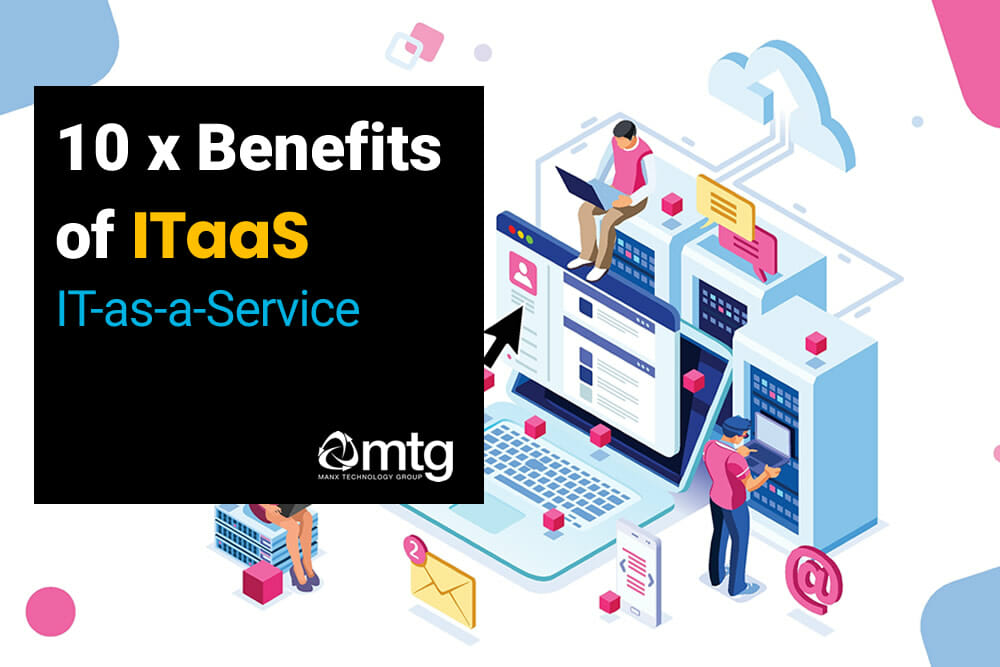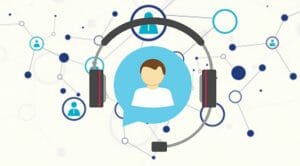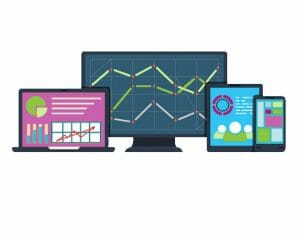
We look at Ten Top benefits of our ITaaS (IT as a Service) solution. The way businesses purchase IT and software services has changed. With the onset of cloud applications and software as a service (SaaS), there is a move away from the traditional model of purchasing and IT maintenance, towards a subscription-based delivery model such as ITaaS.
A monthly subscription fee (opex) has become the new norm. Businesses want the latest technologies and features, built-in security, predictable costs and the highest levels of service – but delivered using a subscription model.
Our ITaaS (IT as a Service) solution delivers a turnkey IT solution with 24×7 support and maintenance, software licensing, and the latest security controls – for a predictable per-user monthly subscription charge. The solution can be delivered from your office, datacentre or cloud environment. If required, ITaaS can also include DaaS (Device as a Service) where your servers, desktops and laptops are included as part of the subscription.
1. 24×7 Service Desk
 The Service Desk is perhaps the most crucial component of an IT support agreement. The Service Desk is the primary point of contact for your users, allowing them to log technical faults, application queries or similar issues. For larger organisations with existing IT capabilities in-house, our service desk can handle your first-line calls, or act as a second-line escalation point for more advanced queries.
The Service Desk is perhaps the most crucial component of an IT support agreement. The Service Desk is the primary point of contact for your users, allowing them to log technical faults, application queries or similar issues. For larger organisations with existing IT capabilities in-house, our service desk can handle your first-line calls, or act as a second-line escalation point for more advanced queries.
The availability and operating hours of a Service Desk are also an important consideration. The majority of organisations rely on their infrastructure 24 hours a day. Even when the regular business operating hours are 9-5, you need 24×7 – for two reasons, remote working and global business models.
- Staff members increasingly work from home, on the road or respond to e-mail outside of regular working hours. While your operating hours are 9-5, having no e-mail for a weekend will pose a real issue for most businesses.
- A large number of our customers have several offices, across several time zones – meaning the business is already operating on a 24×7 basis.
For many businesses, staffing full-time employees or night-rotas to provide their own 24x7x365 helpdesk is neither practical or desirable, both operationally and from a budgetary perspective.
2. Pro-Active Monitoring
Pro-active monitoring aims to identify the symptoms or indications of a fault or issue before it develops into something that could cause a business impact. Monitoring platforms will track utilisation, health metrics and undertake trend analysis. This monitoring will significantly improve uptime, and in the event a potential fault is identified, it will substantially lower MTTR (mean time to repair).
MTG monitor all hardware components, systems availability, software counters and continuously monitor systems events. The NOC (network operations centre) receives and responds to alerts generating by your infrastructure, including security events. These events may be informational (i.e. regular), warnings (i.e. thresholds have been exceeded) or exceptions (i.e. abnormal behaviour). Capturing all of these events and then undertaking event correlation may uncover faults that otherwise would have been difficult to diagnose with this functionality.
3. Performance and SLA monitoring
An ITaaS contract will be underpinned by a Service Level Agreement (SLA) that will set out the response times and other metrics relating to the  service. The parameters contained within the SLA should align with the demands of your business. Does your business require an immediate 1-hour response? Or can it wait for 4 hours? The components of an SLA typically include response times, prioritisation of faults and time to fix. You also need to validate that the scope of the SLA matches your expectations. Does it include user faults? Third-party systems? Vendor management? The ITaaS provider will generally offer several SLA plans that vary in cover and also in price.
service. The parameters contained within the SLA should align with the demands of your business. Does your business require an immediate 1-hour response? Or can it wait for 4 hours? The components of an SLA typically include response times, prioritisation of faults and time to fix. You also need to validate that the scope of the SLA matches your expectations. Does it include user faults? Third-party systems? Vendor management? The ITaaS provider will generally offer several SLA plans that vary in cover and also in price.
4. Standardised Processes
Many ITaaS providers will align their operational processes to ITIL or operate an ISO 9001 QMS. Your business does not need to use ITIL or be certificated to ISO 9001 to benefit, but as a provider – having a predictable IT service management experience is essential. MTG will develop a set of procedures that ensures our operations are aligned to your existing business processes.
5. Patch Management
Maintaining up to date systems is vital from a reliability and security standpoint. With a pro-active patch schedule, your business can gain access to the latest features, performance enhancements and security fixes. The security element is the most important and often overlooked. The annual Verizon data breach report found that more than 70% of all cyber-attacks exploit known vulnerabilities, with many dating back to 1999!
 A coordinated patch schedule ensures your systems are less vulnerable to exploitation and attack – which significantly reduces your exposure to cybersecurity incidents. The first step in any pro-active patch regime is to assess your current environment. What systems do you have? What are their current patch levels? What is the impact of an upgrade?
A coordinated patch schedule ensures your systems are less vulnerable to exploitation and attack – which significantly reduces your exposure to cybersecurity incidents. The first step in any pro-active patch regime is to assess your current environment. What systems do you have? What are their current patch levels? What is the impact of an upgrade?
As part of ServiceCare ITaaS, we would install RMM agents on all your IT systems. The RMM software will then analyse your network, alerting us to out of date software and where suitable, automatically fixing any software or security vulnerabilities. The concept of patching would fall within the SLA and service management process, and in the case of core business systems – it would be subject to systems backups and pre-deployment testing.
6. Subscription-Based Model
Compared to traditional IT service delivery model, the concept of a subscription is perhaps what sets ITaaS apart from its counterparts. The principle of ITaaS is that the whole solution is offered on a subscription basis. Your business pays a monthly fee that is based on two factors:
- The core ICT infrastructure (i.e. servers, network, firewalls, databases)
- User support and licensing (i.e. technical support, Office 365, endpoint security, web filtering)
As your business changes, the ITaaS subscription can grow or flex. The flexible model assists with financial and cash-flow forecasting; projecting forward an operational expense (opex) without having to worry about capital expenditure or holding assets on the balance sheet.
Example ITaaS User Bundle
The following is an example of a typical ITaaS user bundle. Each member of staff has access to the following features:
- 24×7 Helpdesk and Technical Support
- RMM Agent (Remote Management and Monitoring)
- Sophos Central Endpoint Advanced (Antivirus)
- Sophos Central Intercept-X (Advanced malware defence)
- Cisco Umbrella (Secure Internet Gateway)
- DUO (Secure Two-Factor Authentication)
- Microsoft Office 365 Business Premium (Microsoft Office, Sharepoint, OneDrive, Teams, Yammer)
Example ITaaS Infrastructure Cover
The following features reflect an ideal solution covering the ICT infrastructure:
- Server Hardware and Software Support.
- Microsoft Windows Server, SQL Server and VMWare Licensing.
- Daily Backups and Offsite Replication.
- RMM Agents.
- Advanced Network and Monitoring Agents.
- UPS, Power and Environmental Monitoring.
- Advanced Security Controls (i.e. User Access Monitoring, File Monitoring)
For rapidly growing businesses, ITaaS ensures your IT capabilities grow at pace alongside your business operations. This scalability, coupled with 24×7 support and continuous access to an expert technical team, will contribute towards your growth. There will be no unexpected, expensive purchases or requirements for IT staff – this is all catered for within the IT services agreement.
For established businesses which heavily rely on IT for their business operations, ITaaS offers a dependable, cost-effective IT service model that provides the highest levels of support and service.
If you already have your own IT department, the ability to augment this resource with an external ITaaS provider may be a useful addition. ITaaS could cater for the server and core infrastructure, leaving the desktop and end-user support to your existing IT function. Conversely, the ITaaS provider may service your end-users and application faults, leaving your IT function to support and operate the core infrastructure components.
7. ITaaS – Flexible Delivery Model
ITaaS should provide high levels of service, whether your IT is cloud-delivered or uses a traditional server room (on-premise) infrastructure. Our ITaaS service works whether your IT systems are installed in a server room, datacentre or running in the cloud (i.e. Amazon AWS, Azure).
8. Self-Service Support Portals
A self-service support portal allows your users to open support tickets, check FAQs, follow guides and read knowledge base articles without involving the IT department.
The use of an automated support system can significantly increase fault resolution times and will ensure a consistent means of logging faults. IT Support tickets can trigger internal workflows, escalations and can produce useful reports. The portal will allow your users to request adds/moves/changes, new software, password resets or applications.
9. Microsoft Office 365
The majority of our ITaaS solutions include a subscription to Microsoft Office 365. An Office 365 Subscription gives your users full access to the Microsoft Office suite (Word, Excel, Outlook, etc.) but also online services such as Sharepoint, OneDrive, Microsoft Teams, Yammer, Flow and much more. The setup, billing and support of Microsoft Office 365 are included within the ITaaS agreement – covering all aspects of the subscription service.
10. Cybersecurity
Protection against malware and cybersecurity threats are an integral part of our ITaaS solution. Managed Security Service is included as part of ITaaS. This means that in addition to supporting your IT infrastructure; our team will also safeguard your systems, network and end-users from security threats. Your infrastructure is protected by managed firewalls, endpoint protection, 2FA and web filtering. Information security is incorporated into the very fabric of our ITaaS solution.
Learn more and request pricing
If you would like to learn more about our ITaaS solution and receive pricing, please contact our sales team. To provide an accurate quote, we will have a quick discussion about your business, your goals, applications, users and existing infrastructure.
This quick discussion will help us develop a picture of your business and the most appropriate solution. We are keen to demonstrate the value of our ITaaS solution, and you can begin to view IT as an investment, rather than just a cost. E-mail our solutions team sales@mtg.im, call +44 1624 777837 or submit the Request a Quote form on our website.
What is the difference between IT opex and IT capex?
IT Capex (capital expense) is when you are required to purchase or invest in hardware or software. For instance, you may need to purchase your server, Microsoft Windows licensing, VMWare licensing etc. These purchases can cost several thousand pounds, with subsequent costs for maintenance renewals and any work or configuration changes that are required.
IT Opex (operational expense) is a recurring charge (typically monthly) that is often fixed and can be forecast over a given period. With an agreement in place, opex is a predictable monthly fee and all-inclusive from an IT perspective. The opex model makes cashflow forecasting far more predictable.

